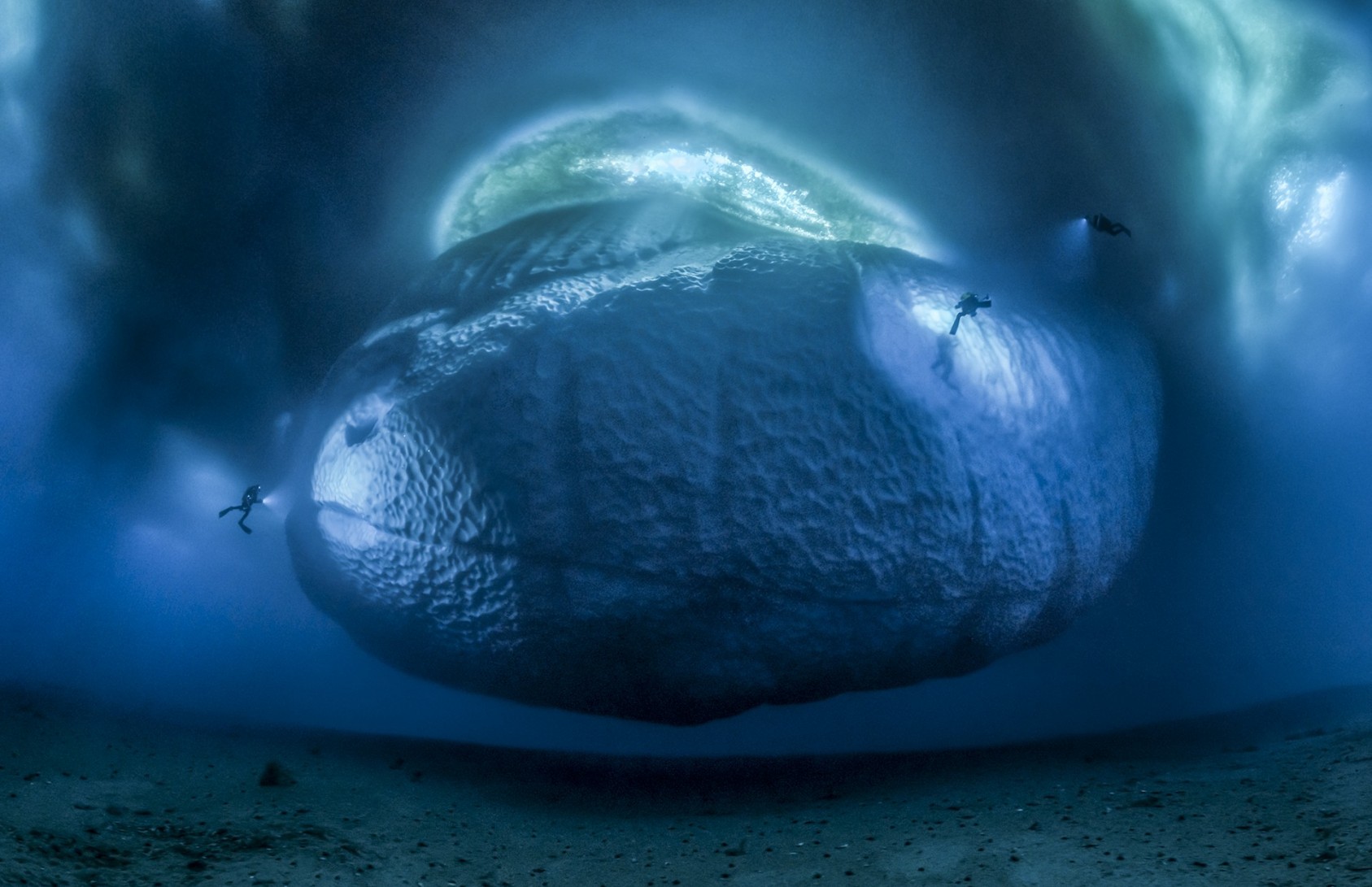
The Winners Of The NHM Wildlife Photography Awards
The ice monster
Laurent Ballesta, France
Winner 2017, Earth’s Environments
Nikon D4S + 13mm f2.8 lens; 1/30 to 1/60 sec at f6.3 – 147 stitched images; ISO 3200; Seacam housing; flashlights.
Laurent and his expedition team had been silenced by the magnitude of the ice blocks – mountainous pieces of the ice shelf – awed in the knowledge that only 10 per cent of their volume is ever visible above the surface. The dive team were working out of the French Dumont d’Urville scientific base in east Antarctica, recording with film and photography the impact of global warming. Ice shelves in some parts of the East Antarctic Ice Sheet are melting faster than scientists had previously assumed, threatening a movement of land ice into the sea and raising sea levels dramatically. When Laurent spotted this relatively small iceberg, he saw the chance to realize a long-held ambition – to show for the first time the underwater part. The berg was stuck in the ice field – hovering like a frozen planet – unable to flip over and so safe to explore. But it took three days, in virtually freezing water, to check out the location, install a grid of lines from the seabed to buoys (so that Laurent could maintain a definite distance from it) and then take the series of pictures – a substantial number, with a very wide-angle lens – to capture the entire scene. ‘None of us could see the whole thing under water. Close-to, it was overflowing from our view. From a distance, it disappeared into the fog.’ So, back at the station, it was a tense wait at the computer, while the result of 147 stitched images came together on screen. The front of the vast foot of the frozen monster, polished by the current probably over years, shone turquoise and blue in the light penetrating the ice ceiling, dwarfing Laurent’s companions as they lit its sides.